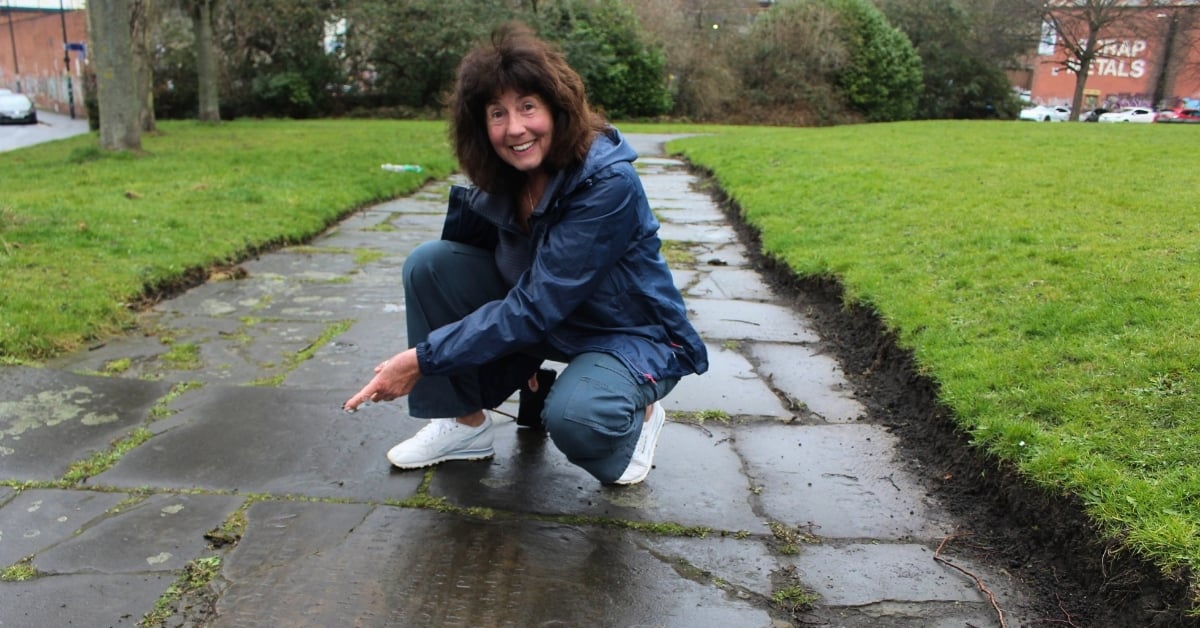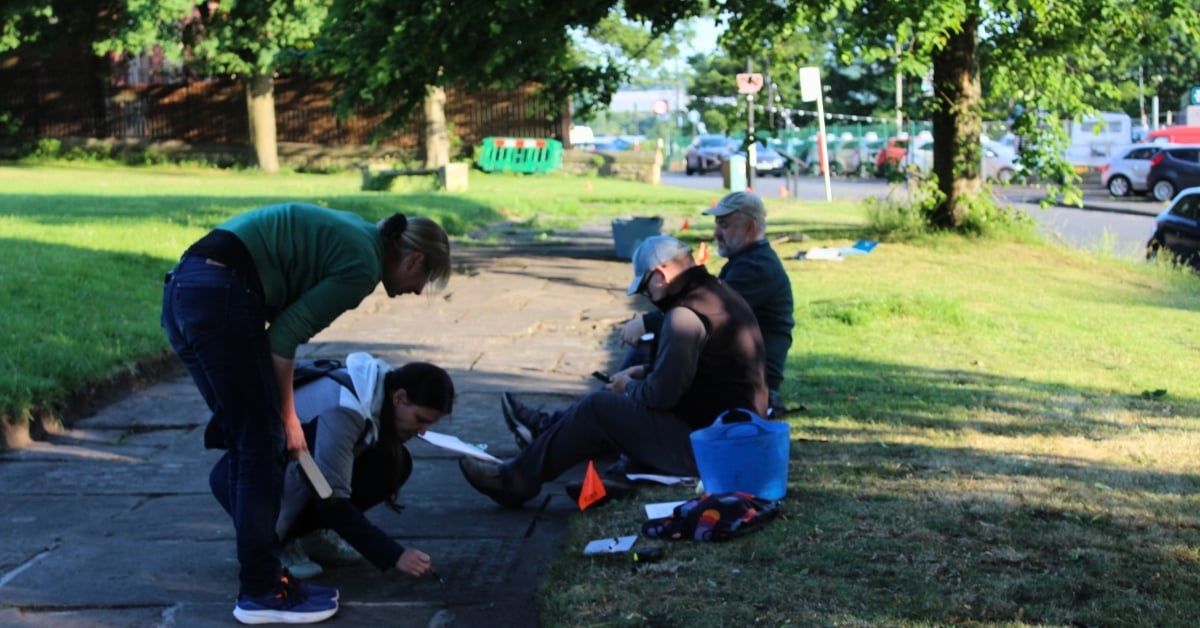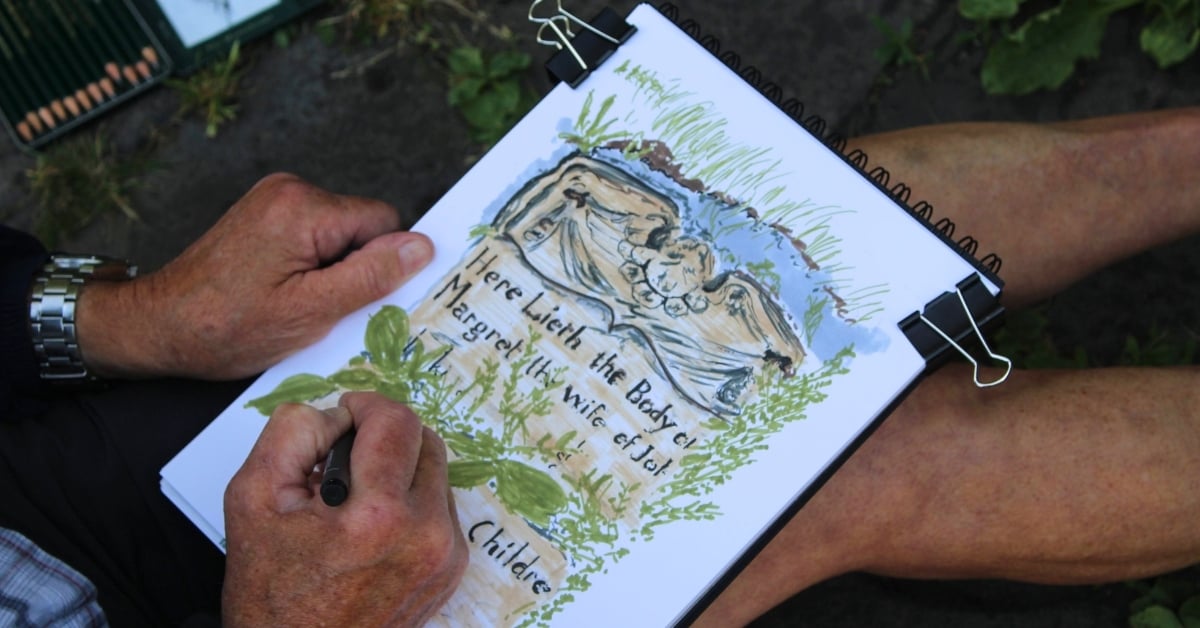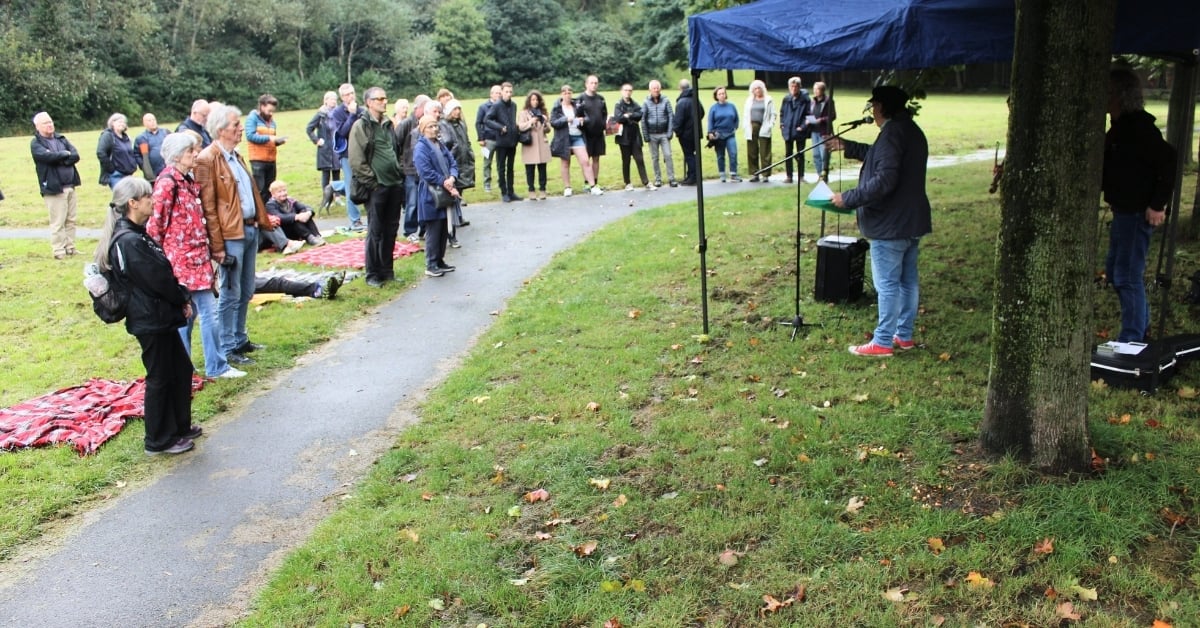Hidden histories: the story of Ballast Hills Burial Ground
26 June 2025 | By: Dr Myra Giesen | 5 min read
We are uncovering the overlooked history of Ballast Hills Burial Ground (BHBG) in Newcastle upon Tyne, curating the stories of 40,000 individuals buried there through research, collaboration, and public engagement
Once a vital part of Newcastle’s social and religious landscape, Ballast Hills Burial Ground (BHBG) has gradually slipped from public memory and historical scholarship. Now, this project is changing that narrative, restoring the location’s identity and ensuring its stories are not lost to time. It's also reshaping how heritage is understood, valued, and governed. BHBG project lead, Dr Myra Giesen, shares how the team is uncovering and honouring the lives of those buried there.
Contents
- A burial ground born from social need and religious dissent
- Reconnecting with place and past
- Research with, not on: a participatory approach
- Creative practice: reimagining memory through sound and word
- Reframing impact: heritage as shared responsibility
- Looking ahead
A burial ground born from social need and religious dissent
On the boundary of Byker and the east side of the Ouseburn, in Newcastle, near its confluence with the River Tyne, BHBG was established by nonconformists/dissenters, including Huguenot refugees and Presbyterian communities, who sought burial outside the Anglican churchyard.
As industrialisation transformed the region, BHBG became a vital sanctuary for the working poor, where they could bury loved ones free from clerical fees and at minimal cost. The burial registers speak plainly: this was a burial place of the people, including labourers, washerwomen, pitmen, ratcatchers, children, and stillborn babies. After its closure in 1853, it gradually faded from public awareness. Reopened as a park in 1930, it shifted to serve the living as a valued green space.

Eleven headstones commemorating ministers, among the 943 gravestones from Ballast Hills Burial Ground, were relocated and re-erected along the east side of the former Ouseburn Schools, now the Education Committee Distribution Centre office, a Grade II* listed building. They now stand as a fragment of the site’s near-invisible funerary landscape. Credit: Dr Myra Giesen
Supported by an Arts and Humanities Research Curiosity Award, the BHBG project, co-led by Dr Shane McCorristine, is uncovering the site’s obscured histories. Through collaboration with local communities and the formation of a descendants' group, it is showing how curiosity-driven, engaged research can restore the cultural value of forgotten pasts.
‘When people see their own histories reflected in a project, it stops being just research—it becomes restoration. Collaboration with communities brings depth, accountability, and meaning to the work in ways we could never achieve alone’ — Dr Myra Giesen
Reconnecting with place and past
Ballast Hills is more than a burial ground. Known by locals as ‘Grannies Park’ and a few as ‘Plaguey Fields’, it evolved into the principal resting place for Newcastle’s working-class families. Its records reveal a region-wide footprint, with burials from Byker, Gateshead, and beyond. Some of the deceased had arrived by sea, while others drowned in it. This breadth reflects the site’s role as a democratic space of remembrance in an expanding industrial port city.
For some, these rediscoveries are deeply personal. One descendant reflected:
‘I knew my ancestors were from Byker, but standing here, next to their burial site, gave me a sense of rootedness I didn’t expect. It made me proud. It made them real.’ - Debbie Booth, Descendant
Such moments, like the one captured in our April 2025 newsletter, speak to what the project aims to foster: renewed connections between people, place, and the past.

Debbie Booth points to her ancestor’s headstone, now forming part of the pathway at Ballast Hills Burial Ground. Once a marker of personal remembrance, the stone now forms part of the pathway, one of close to a thousand repurposed within this historic burial site. Credit: Dr Myra Giesen
Research with, not on: a participatory approach
Co-production is central to the project. More than 300 people have engaged with our survey on burial spaces and community values. Volunteers have contributed close to 400 volunteer hours, taking part in geophysical assessment of the site, gravestone cleaning and recording, archival research, and creative sessions exploring BHBG’s layered past.

Volunteers, including the 4x great-grandson of Tyneside poet Robert Gilchrist (1797–1844), record inscriptions from the stone pathway at Ballast Hills Burial Ground. Their work contributes to comparisons with historic inscription lists from 1817, 1904, and 1929. Credit: Dr Myra Giesen
We’ve previously hosted interactive public presentations, where in-depth Q&A sessions sparked lively discussion and drew attention to the complex histories of Ballast Hills. These events helped raise awareness and fed public interest.
In recent months, we’ve shifted the focus to hands-on research. Our recent research workshop combined onsite exploration with archival investigation. Participants learn about local archives while moving through the very landscape their research brings to life. This method, rooted in engagement and place, invites a deeper, more personal connection with the past. We will hold similar workshops this autumn.
Creative practice: reimagining memory through sound and word
Creative engagement has emerged as an unplanned but greatly welcome strand of the project, bringing Ballast Hills’ stories to life in powerful and unexpected ways.
‘Creative work has opened doors we didn’t even know were there. It’s allowed people to connect with Ballast Hills not just through facts, but through feeling, imagination, and shared meaning’ — Dr Myra Giesen
As part of a book, Beneath this Ground, poet Harry Gallagher and musicians Marina Dodgson and Maurice Condie composed original works that interpret the lives and legacies connected to the site. Their pieces - The Ballad of Ballast Hills (poem) and Ballast Hills (tune) - evoke its buried histories and emotional resonance.
'The Ballad of Ballast Hills' written and performed by Harry Gallagher. Music composed and performed by Marina Dodgson & Maurice Condie
First performed at a Heritage Open Days event at BHBG, these works drew a large, engaged audience and highlighted the role of artistic response in heritage practice.
We welcome interest from other creatives who would like to collaborate on similar responses. We recently had Kenny Brown, from the Paint the Ouseburn group, drop by and create a plein air sketch of one of the gravestones.

Kenny Brown, from the Paint the Ouseburn group, stopped by to create a plein air sketch of one of the gravestones at Ballast Hills Burial Ground, capturing its carved details and surrounding vegetation in situ. Credit: Dr Myra Giesen
Reframing impact: heritage as shared responsibility
For BHBG, neglected heritage is not simply uncovered, it's reactivated through community collaboration.
In a city shaped by redevelopment and disparity, BHBG offers a lens into the lives of those often missing from official histories: the working poor, dissenters, stonemasons, children, and victims of epidemic or misfortune. Their presence remains inscribed in the landscape, even as public memory has faded.
Through research shaped by public curiosity and lived experience, the project has helped reframe BHBG from a forgotten burial space into a platform for civic dialogue. Activities, from gravestone cleaning and archival workshops to creative performances, invite people to encounter history not as a fixed record, but as something they help interpret and transmit.

Poet Harry Gallagher, joined by musicians Marina Dodgson and Maurice Condie, performs Beneath This Ground at Ballast Hills Burial Ground during a 2024 Heritage Open Days event, bringing voices of the past to life through poetry and music onsite. Credit: Dr Myra Giesen
This participatory model reframes heritage as a shared civic responsibility. It demonstrates how collective stewardship, co-created knowledge, and inclusive storytelling can reshape how heritage is understood, valued, and governed.
‘Heritage is not a thing of the past, but a living conversation—one that belongs to everyone and grows stronger through shared care and collective memory’ — Dr Myra Giesen
In making space for plural voices and overlooked narratives, BHBG becomes more than a historic site, it becomes a living, negotiated space of connection and care.
Looking ahead
We are currently seeking funding to take the project into its next phase.
Future plans include:
- the creation of a digital archive
- new creative commissions
- deeper engagement with schools and communities
- co-produced recommendations for sustainable site care and equitable interpretation
At its heart, it’s a commitment to placing communities at the centre of heritage decision-making.
This local commitment is also informing wider regional collaboration.
As part of efforts to identify common challenges across burial spaces in the North East, we established the North East Funerary Heritage Group, a new network bringing together researchers, community groups, heritage practitioners, and policymakers. Through its blog, the group is building a platform to share insights, highlight gaps in regional understanding, and foster new connections.
BHBG is helping to shape this conversation by offering a model for inclusive, community-led research that can inform practice across the region.
We’re keen to hear from others interested in collaborating, contributing to research, or supporting future phases of the project. Join us in restoring voice and place: get in touch at ballast-hills@newcastle.ac.uk, follow our blog, or connect with us via Instagram, Facebook, or BlueSky.
You might also be interested in
- visit the project website
- learn more about the project leads, Dr Myra Giesen, Principal Investigator, and Dr Shane McCorristine, Co-Principal Investigator
- read the blog post: What is Funerary Heritage? Exploring its meaning and importance
- explore the Centre for Heritage, a Newcastle University Centre of Research Excellence
- discover more research from our School of Education, Communication and Language Sciences and School of History, Classics and Archaeology
- learn more about our Cities and Place Strength, and how we’re helping to build sustainable communities and living environments, for the benefit of all
